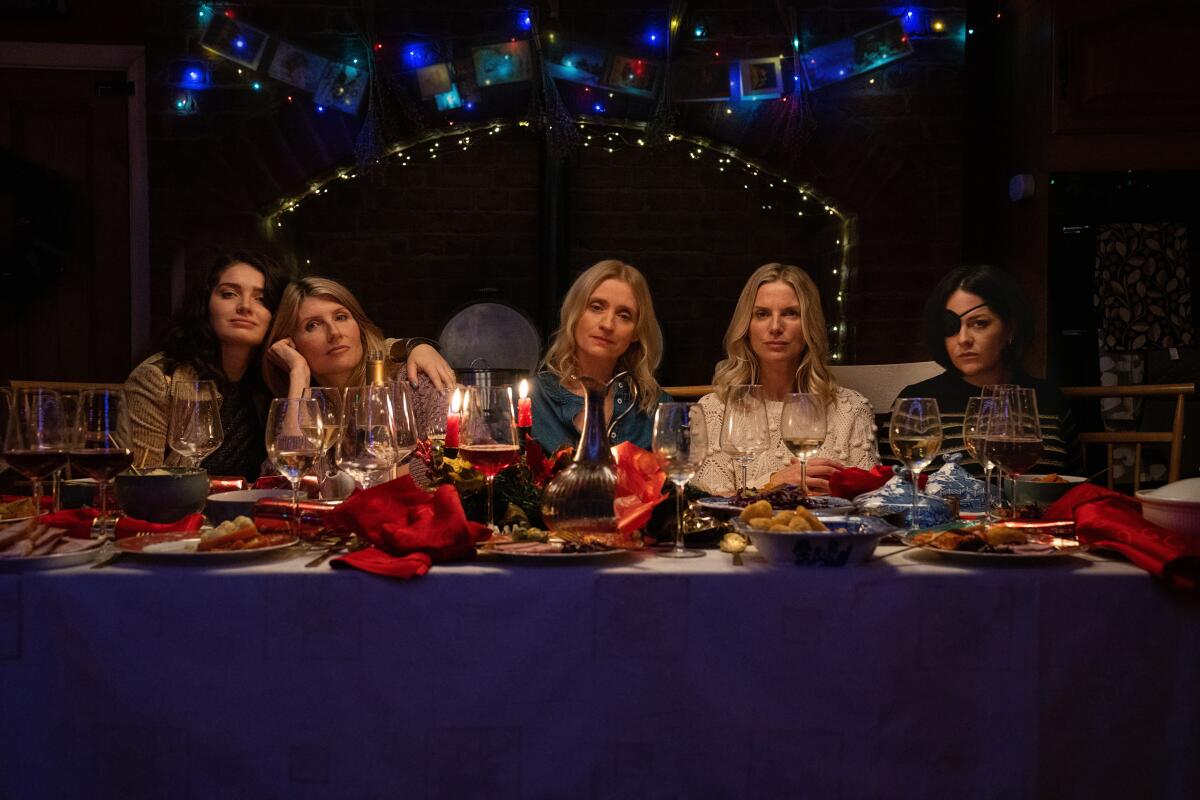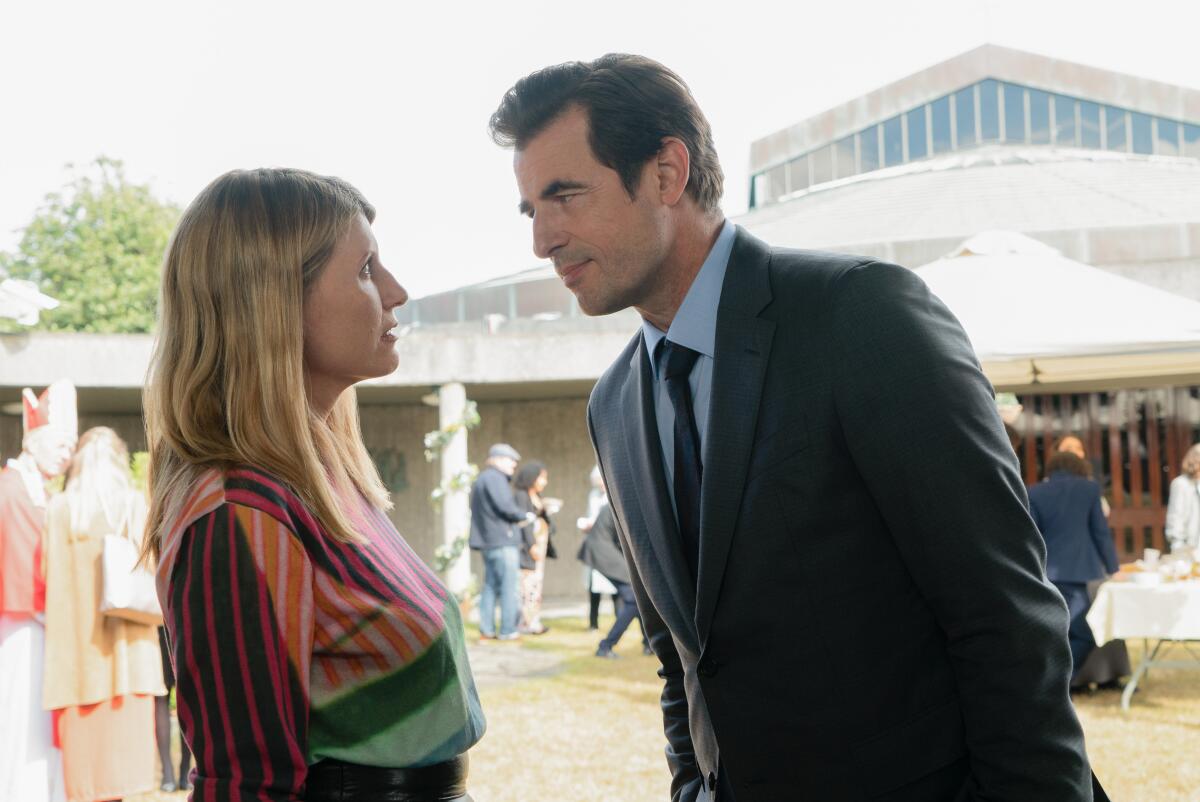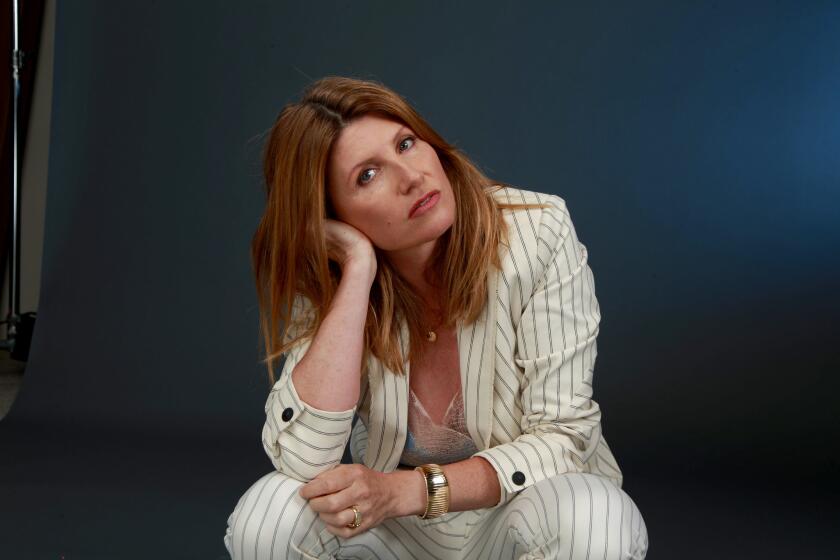When ‘Bad Sisters’ team up to kill, the result is an engaging, lovable black comedy

In the engaging Apple TV+ series “Bad Sisters,” closely adapted by Sharon Horgan (“Catastrophe”) from the Belgian series “Clan” and set in and around Dublin, four sisters set out to liberate a fifth from the husband who is destroying her. That the husband begins the series in a coffin, before the story jumps back in time, suggests that they have succeeded, though questions will remain until the last of the series’ 10 episodes.
It’s a comedy, mostly.
For the record:
1:57 p.m. Aug. 19, 2022An earlier version of this article said there are eight episodes of “Bad Sisters.” There are 10.
The complete guide to home viewing
Get Screen Gab for everything about the TV shows and streaming movies everyone’s talking about.
You may occasionally receive promotional content from the Los Angeles Times.
Horgan plays Eva Garvey, who took charge of her siblings after the untimely death of their parents; she and her sisters are colorfully distinct, and yet they seem truly related, unusually close if sometimes at odds. (As the closest families often are.) Besides the fragile Grace (Anne-Marie Duff), whose husband, and above-mentioned corpse, John Paul (Claes Bang), is grinding her down to nothing, there is Ursula (Eva Birthistle), a nurse and mother of four, somehow managing an adulterous affair with her photography teacher; angry Bibi (Sarah Greene), who lost an eye in an accident the details of which will become significant; and bright-eyed Becka (Eve Hewson), the baby, a massage therapist, who has a history of ill-advised relationships, but considerable life force. Each has an additional motive for wanting John Paul dead.
There is nothing good to say about him. Manipulative, selfish, controlling, territorial, vindictive, (performatively) prudish, snobbish, homophobic, sexist, mean, demeaning and aggressively passive-aggressive, he masks his cruelty to his wife as paternal concern. (He is with Grace, one can only assume, because she offers him no resistance and he can depend on her to raise their daughter as he sees fit.) There is a hint of some trauma in his childhood, which is not really explored. In any case, it’s dramatically counterproductive to humanize or psychologize him, though Bang does at least try to bring some shading to a thoroughly despicable character; he plays him as soft-spoken, letting his height and weight comprise an implicit threat against the the small, reed-thin Duff. The morality of getting rid of John Paul is never really in question — the viewer would be happy to do it himself, if it came to that — only the practical matters of how to do it and how to get away with it.

Murder, of course, isn’t right, though it offers comic possibilities that a more rational approach to Grace’s situation — say, therapy leading to divorce — would not. Nevertheless, it’s necessary to keep the viewer’s sympathy with the attempting murderers, and Horgan, her writers and her cast pull this off expertly, not just through the unrelieved awfulness of John Paul — a common enough trick, making the antagonist-victim less sympathetic than his protagonist-attackers — but by the portrayal of the sisters, who, though not without flaws, are well-rounded, recognizably human and coming ultimately from a place of love.
The story unrolls along two, eventually connecting tracks, one leading up to the death of John Paul, and one set in its immediate aftermath, each with its own mysteries and suspense. The latter timeline adds another contrasting family group, the Claffins, half-brothers Thomas (Brian Gleeson) and Matt (Daryl McCormack). Thomas, whose bedridden wife is about to give birth, runs their late father’s insurance business, which holds the policy on John Paul and is facing a disastrously huge payout; in order to avoid bankruptcy, he’s frantically bent on proving that the insured was murdered. Matt, newly returned from London, is enlisted to help him prove it, a complication further complicated by the fact that Matt and Becka have begun seeing one another. They are relatively innocent characters, in that they know less for longer, and their genuinely romantic storyline gives the audience something less unsavory to root for.
For Sharon Horgan, the process of saying goodbye to “Catastrophe” isn’t something she has gotten around to just yet.
Along with the sisters’ individual storylines, intrafamilial tensions and the often farcical failures of their attempts to kill John Paul — not without some serious collateral damage, seriously felt — keep things chugging throughout the series’ length. Mysteries are kept mysterious: Who finally murdered JP (and there are other possibilities besides the Garvey girls), if, in fact, anyone did? And will the Claffins, who generate their own measure of sympathy, go down to ruin?
Still, the conclusion is not unpredictable, and, really, all the more satisfying for being so. “Bad Sisters” is a dark sort of comedy, with dramatic passages, but it is a comedy after all. Its characters — barring the dead one — are reaching for the light, and the talented cast makes them easy to love. Unlike John Paul, who does all he can to divide Grace from her siblings, you’re happy when they’re together. And apart from whatever pleasures the story brings — despite the murder plot and abusive relationship, it is meant to be pleasurable — the series is sensually luxurious, from the lilting voices to the unpredictable song selections (from Ralph Stanley to the Velvet Underground to Melanie) to the generally pretty setting. Much of it takes place along the coast, overlooking the Irish Sea, including key scenes shot at rocky bathing spot Forty Foot, in Sandycove, below the Martello tower where James Joyce stayed and “Ulysses” opens. Nobody mentions that, because the characters just go there to swim, but I thought you might like to know.
More to Read
The complete guide to home viewing
Get Screen Gab for everything about the TV shows and streaming movies everyone’s talking about.
You may occasionally receive promotional content from the Los Angeles Times.








